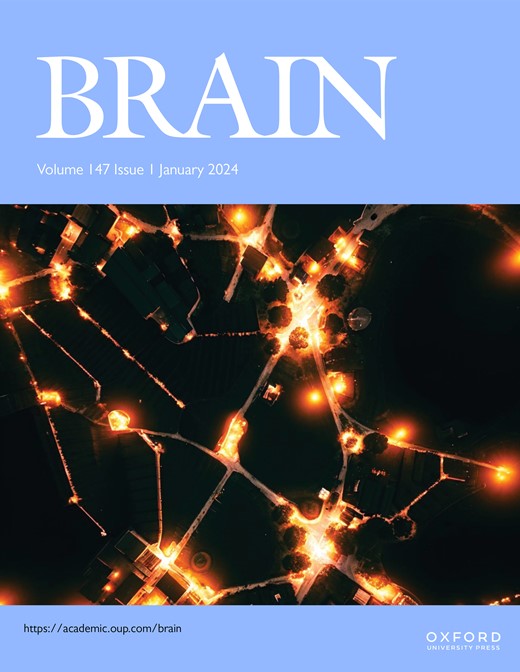POU3F2通过SOX13和ADNP调节典型Wnt信号传导,扩大神经祖细胞群
IF 11.7
1区 医学
Q1 CLINICAL NEUROLOGY
引用次数: 0
摘要
转录因子POU3F2的功能缺失突变已在神经发育障碍患者中被发现。为了阐明POU3F2在人类神经发育中的机制作用,我们在人类神经祖细胞(npc)中诱导了POU3F2的破坏。NPCs中POU3F2突变导致基线典型Wnt信号减少和增殖减少,导致放射状胶质细胞过早分化。此外,POU3F2水平在遗传不同的npc中与基线典型Wnt信号显著正相关,与放射状胶质细胞规格标记负相关。通过一系列无偏分析,我们发现SOX13和ADNP是POU3F2的转录靶点,它们介导POU3F2对人类npc中Wnt信号传导的影响。最后,我们描述了5例自闭症谱系障碍患者的POU3F2功能缺失突变,增强了其在人类神经发育中的关键作用的遗传证据。总之,这些研究将POU3F2定义为典型Wnt信号的激活剂,并将两个高可信度的自闭症基因ADNP和POU3F2在神经发育调节中机制地联系起来。本文章由计算机程序翻译,如有差异,请以英文原文为准。
POU3F2 regulates canonical Wnt signalling via SOX13 and ADNP to expand the neural progenitor population
Loss-of-function mutations in the transcription factor POU3F2 have been identified in individuals with neurodevelopmental disorders. To elucidate the mechanistic role of POU3F2 in human neurodevelopment, we induced POU3F2 disruption in human neural progenitor cells (NPCs). Mutation of POU3F2 in NPCs causes reduced baseline canonical Wnt signalling and decreased proliferation, resulting in premature specification of radial glia. Additionally, POU3F2 levels across genetically diverse NPCs significantly associate positively with baseline canonical Wnt signalling and negatively with markers of radial glia specification. Through a series of unbiased analyses, we show that SOX13 and ADNP are transcriptional targets of POU3F2 which mediate POU3F2’s effects on Wnt signalling in human NPCs. Finally, we describe five individuals with autism spectrum disorder that harbor loss-of-function mutations in POU3F2, enhancing the genetic evidence for its critical role in human neurodevelopment. Together, these studies define POU3F2 as an activator of canonical Wnt signalling and mechanistically link two high-confidence autism genes, ADNP and POU3F2, in the regulation of neurodevelopment.
求助全文
通过发布文献求助,成功后即可免费获取论文全文。
去求助
来源期刊

Brain
医学-临床神经学
CiteScore
20.30
自引率
4.10%
发文量
458
审稿时长
3-6 weeks
期刊介绍:
Brain, a journal focused on clinical neurology and translational neuroscience, has been publishing landmark papers since 1878. The journal aims to expand its scope by including studies that shed light on disease mechanisms and conducting innovative clinical trials for brain disorders. With a wide range of topics covered, the Editorial Board represents the international readership and diverse coverage of the journal. Accepted articles are promptly posted online, typically within a few weeks of acceptance. As of 2022, Brain holds an impressive impact factor of 14.5, according to the Journal Citation Reports.
 求助内容:
求助内容: 应助结果提醒方式:
应助结果提醒方式:


